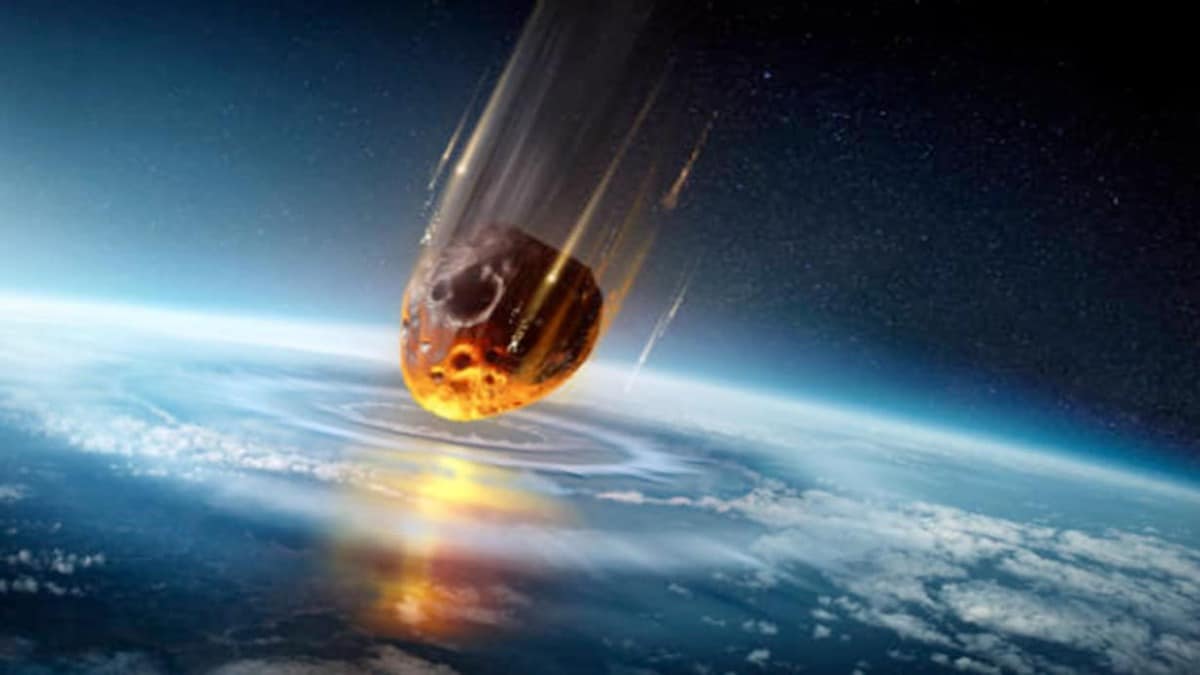Understanding Dinosaur Extinction: New Insights into Asteroid Impacts
Dinosaurs, the colossal creatures that once dominated our planet, became extinct approximately 66 million years ago. For decades, the leading theory for their disappearance has pointed to a massive asteroid impact, specifically the one that created the Chicxulub crater in Mexico. However, recent studies suggest that the narrative of their extinction might be more complex, with implications of multiple asteroid strikes playing a critical role in this catastrophic event.
New Research Unveils Additional Impact Craters
A groundbreaking study published in a prominent scientific journal sheds light on the underwater craters off the coast of Guiana. Researchers utilized 3D seismic imaging to analyze these hidden structures, leading to the discovery of an 8-kilometer-wide crater named the Nadir crater. This crater is believed to have been created by an asteroid approximately 400 meters in diameter, which struck Earth at an astonishing speed of 72,000 kilometers per hour.
The Role of the Nadir Crater in Dinosaur Extinction
Although the Nadir crater is considered smaller than the Chicxulub impact, the explosion it produced was still immense, leaving a significant imprint on the Earth’s geological narrative. Scientists theorize that the impact triggered intense seismic activity, causing the sediments beneath the ocean floor to liquefy. This process likely led to underwater landslides, resulting in widespread destruction across thousands of square miles surrounding the crater’s rim.
Consequences of the Impact
One of the most alarming outcomes of this asteroid impact was the generation of a colossal tsunami, estimated to reach heights exceeding 800 meters. This tsunami would have surged through the Atlantic Ocean, further contributing to the catastrophic climatic and environmental changes that characterized the end of the Cretaceous period.
Although researchers have narrowed down the timing of this impact to a window between 65 to 67 million years ago, the specific sequence of these events, including the timing of the asteroid strikes, remains an area of ongoing investigation. Dr. Nicholson, a prominent researcher in this study, emphasizes that there are around 20 known marine craters worldwide, but the Nadir crater stands out for the detail provided in this study.
Table: Key Features of the Nadir Crater
| Feature | Description |
|---|---|
| Diameter | 8 kilometers |
| Asteroid Size | 400 meters |
| Impact Speed | 72,000 kilometers per hour |
| Depth Below Sea Floor | 300 meters |
| Potential Tsunami Height | Over 800 meters |
Conclusion
This new research adds a fascinating layer to our understanding of the events that led to the extinction of the dinosaurs. It suggests that multiple asteroid impacts may have compounded the disastrous effects on the planet, ultimately leading to the demise of these magnificent creatures. As scientists continue to unravel the mysteries of our planet’s past, it becomes increasingly clear that the extinction event was a complex interplay of various catastrophic phenomena rather than a singular event.
For the latest updates on technology and science, follow us on our platforms and stay informed.












